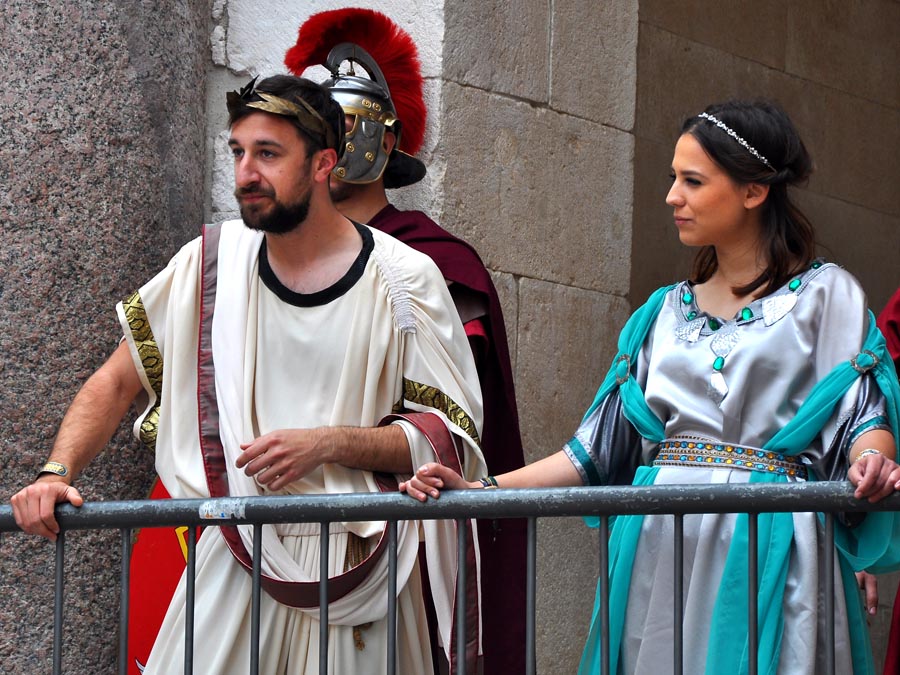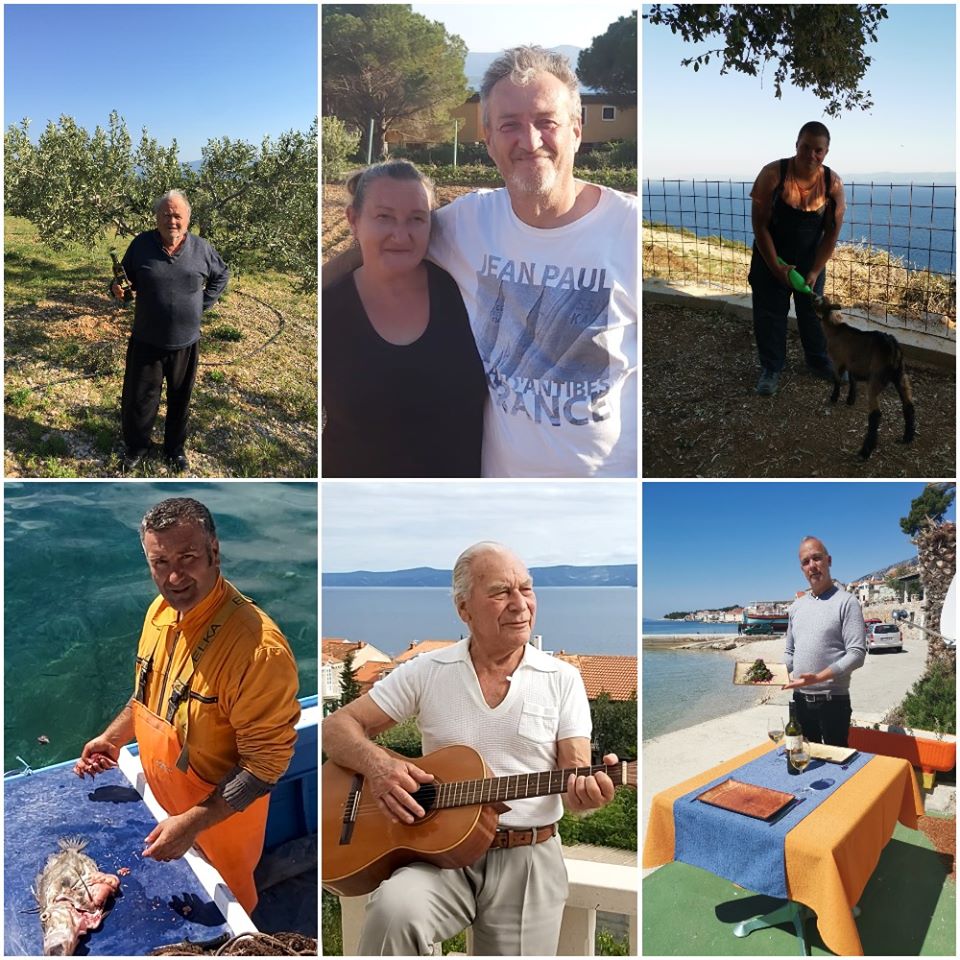CELEBRATING LOVE The project „Dalmatia – Storytelling Destination“ tells a tale of the most beautiful love stories from Splitsko-Dalmatinska County
Welcome to the project Dalmatia – Storytelling Destination… This is a story of the untold legends, full of memories, laughter, bitter tears, revenge… If only these walls could talk…

As Valentine’s Day is approaching, we are getting in the mood to celebrate love. They saythat only the heart can see “love.” Still, the project Dalmatia – Storytelling Destination has given “love” a shape visible to everyone. This creatively designed project with storytelling elements tells us tales of the most beautiful love stories in Splitsko-Dalmatinska County (SDŽ).

If the walls of homes and palaces in Splitsko-Dalmatinska County could talk, they would reveal many happy love stories, but also those with sad or even dramatic endings. Many legends tell tales about them. Some of them are brought to you as a gift for Valentine’s Day by storytellers of Dalmatian cultural heritage, licensed tourist guides from SDŽ involved in the Dalmatia – Storytelling Destination project.

DALMATIA – STORYTELLING DESTINATION
Revival of storytelling in museums and institutions dedicated to preserving cultural heritage is a unique project in Croatia and Europe. In Dalmatia, as a storytelling destination, 14 characters of the area’s rich heritage have been revived. In addition to this project, 23 themed tours have been created. This project, intended for tourists and the local population, is focused on providing authentic experiences of cultural heritage through storytelling. These commercial guided tours will be available through the County’s storytelling platform that offers storytelling tours led by knowledgeable and certified guides wearing costumes. The project aims to preserve and publicize Dalmatian cultural heritage and create attractive 365 tourist offers in Splitsko–Dalmatinska County.

Here are 7 most touching legends and stories:
1. Castles and legends from Kaštela
In the 17th-century Kaštel Lukšić, a girl named Dobrila lived with her parents in the Vitturi Castle. And nearby, in the Rušinić Castle, a boy named Miljenko lived with his father. Their fathers, sworn enemies, opposed their love and brought a tragic ending to it. The storyteller starts telling the story near Dobrila’s castle and leads to the Church of the Assumption of Mary, where Romeo and Juliet from Kaštel were married. The tour then continues to the Rušinić Castle and St John the Baptist Church, where they were buried. The story reveals a tragic truth about Miljenko’s death, who was killed by Dobrila’s father. The tragic death of her loved one led to Dobrila losing sanity, wishing only to be buried next to her husband.
Storytelling guide: Nataša Birčić

2. A STORY OF DOBRILA VITTURI
The City Museum in Kaštela hosts this 45-minute storytelling experience that tells a tale of Dobrila and Miljenko, Romeo and Juliet from Kaštela. The guides will tell a story about happiness and tragedy with the help of a revived character of Dobrila. In addition to the love story, the visitors will have a chance to learn about the history of Kaštela.
Storytelling guides: Sandra Hrabar and Jelena Marijanović

3. Roko and Cicibela
…It was like in a story. Roko, a poor fisherman and the son of a rope maker. Cicibela, a daughter of a porter, even poorer… Ahh, who hasn’t heard of a story of a couple that fell in love in Split’s Matejušica. Ivan Baranović and Boško Papić will tell a story about these poor lovers from varoš (a part of the city) with just a little bit of bread, even less fish, and a lot of love. In addition, they will show the sights of the charming Vela Varoš. The couple married in 1903 lived on a Dujkin Dvor gaeta (a traditional wooden boat) named by Roko. The legend says that they died together, embracing each other during the winter of 1936/1937.
Storytelling guides: Ivan Baranović i Boško Papić

Love stories of ancient Split
4. Diocletian and Prisca
It is not easy to single out a love story from the ancient texts about love dedicated to Split. A more popular one is a story about Diocletian. According to the legend, the Emperor met his darling Prisca in the fields of Spanish broom. Maybe in Salonika, on the slopes of Kozjak, or on the mountain of Mosor. He was faithful to her and their daughter Galeria Valeria. When he abdicated in 305, he retired and withdrew to the Palace with Prisca. There, they lived peacefully until 310, growing cabbage. This is the year when his son-in-law and heir became sick. Mother Prisca rushed off to Salonika to help her daughter. In 311, Galerius died. As Galeria Valeria was a daughter of the great emperor, it was expected that the man that married her would become an emperor. But Galeria Valeria did not want to remarry, especially not for political reasons. This is why she and her mother were expelled. They found shelter in today’s Syria. But her adopted son, Candidianus, remained in Salonika (probably Galerius’ son from his first marriage). Pretender to the throne, Licinius, sent her a message telling her that if she did not return to Salonika, he would kill Candidianus. As she loved him like her own son, she decided to go back. Unfortunately, it was too late as Licinius beheaded Candidianus. Apparently, someone from the crowd spotted Galeria Valeria and Prisca and informed Licinius about their arrival. The two of them were arrested and executed.
Unable to save them, Diocletian died of sadness. According to the legend, he jumped into the sea below his Palace.
5. The love story of Adela and Mario
This story takes us back to the 16th-century Klis that was under the Turks at the time. A young and wealthy tradesman lived there. His name was Adel. A wealthy family from Split – Vornić – was buying his goods. Their youngest daughter Maria fell madly in love with Adel, who asked her to be his wife. He even promised that he would convert to persuade his family to bless their marriage. For the Vornić family, it was unacceptable for a Muslim man to join their family. So they sent Mara to a convent, where she became sick and died. This story of Adel and Mara was written by Luka Botić. Josip Hatze composed an opera to a libretto written by Branko Radic.
6. An unusual love triangle
Legends about Split also talk about mayhem, an unusual love triangle with a beautiful daughter of a sea captain in the middle. Marko Marulić, a famous Croatian poet, lawyer, judge, and Renaissance humanist, and his friend and relative Papalić fell in love with her. The young maiden could not decide between the two. So she would throw down the ladder during the night. One of them would guard underneath the window while the other would climb the ladders to the room. Each night they would take turns. And then, one night, there was a bloody confrontation. It was a break of dawn, but there was no sign of Papalić. Marulić suddenly spotted a bag at the bottom of the ladders with his friend’s head. The legend says that he took it home with him. He buried his friend and then withdrew to the island of Šolta, where he lived like a monk for the rest of his life. The young maiden was walled up in the house.
7. Forbidden love of Leon and Izolda
A 15th-century story of forbidden love from Split is about Leon, a son of the Venetian duke Quirin, and Izolda Alberti, the only daughter of Madi Alberti, a nobleman from Split. Wanting to help them, Leon’s friend, sister Katarina, lent her robe to him so that he can disguise and secretly meet his loving Izolda during a mass. When the old Albert found that out, he sent his daughter to the Benedictine convent of St Arnir. But the lovers continued seeing each other, planning to get married. However, to escape, she needed to go through the attic full of coffins hiding bodies of stillborn babies and those that died after birth. Izolda was so terrified that she stayed in the convent and died there. Leon has died in the battle of Zadar.
Storytelling guide: Sunčana Cokarić
Photo credits: Tourist Board of Kaštela, Roko and Cicibela (1978), Storytelling Dalmatia
DALMATIA - STORYTELLING DESTINATION Expounding tours to revive the chequered past of Croatian aristocracy in Dalmatia
Expounding tours of Kaštela, Solin, and Trogir
Kaštela, Solin, and Trogir are small towns in the vicinity of Split. Expounding tours within the Dalmatia Storytelling Project revive the chequered past of Dalmatia, its turbulent history, adventures of the nobility, and a beautiful love story. Kaštela was ravaged by the Turks, to which many remains of buildings bear witness, but is nowadays known for its first-class olive oil and wine. Solin has a different history: It is proud of its royal love story and boasting its beautiful basilicas. "Little Venice" proudly tells the story of a noble family who left their love in Trogir.

Expounding tour Roots of Dalmatia
Kaštela, a place near Split, is known for its turbulent history and its extra virgin olive oil that is genuine liquid gold, and its top wines, the most famous of which is Crljenak Kaštelanski or Zinfandel. Expounding tour Roots of Dalmatia familiarises with the way of life in Kaštela between the 5th and the 21st century, long past hallmarked by struggles, survival, and outstanding courage of local inhabitants. This region was exposed to attacks by Turkish and other invaders, as evidenced by the remains of towers, forts, and citadels.
The history of Kaštela was marked by two Croatian noble families Ćipiko and Stafileo, who built fortifications, thus defending their place in numerous defensive actions and the Venetian-Turkish wars. They were mainly landowners, merchants, and sailors who invested their funds into chapels, works of defense, and farm buildings. Peasants and farmers of Kaštela earned their livelihood by growing fruits, vegetables, and cereals and processing olives and grapes. Many former customs have vanished into oblivion, yet wine and olive oil are still part of the tradition. Taking a walk, visitors will learn about the historical development, which has made a dent in today's life of Kaštela and Dalmatia and enjoy the extra virgin olive oil.
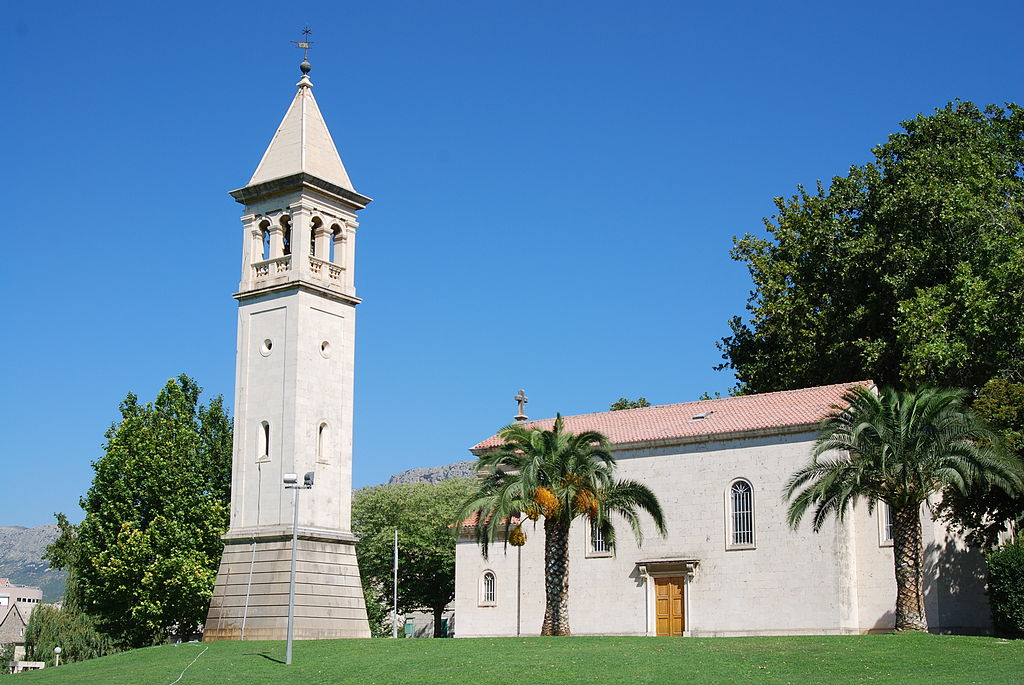
Royal stories from Solin
With the help of the governor of Zadar, ban Pribin, the young king Mihajlo Krešimir II of the Trpimirović lineage won the civil war against his brother Miroslav and was in 949 anointed king. The following year, he cemented his alliance with the governor by providing a grant to the Zadar monastery of St Chrysogonus. There he was hit by Cupid's arrow and fell in love at first sight with a young Jelena from an aristocratic family of Madijevci.

They got married and ruled from the then royal city of Solin. They had a son Stjepan Držislav, who was to inherit his father's crown. However, King Mihajlo died in a battle while Stjepan Držislav was still a minor, so mother Jelena took over the reign as regent in her son's name. During her short reign, two churches were built on the river island in Solin - the coronation basilica of St. Mary and the burial basilica of St. Stephen. King Mihajlo was buried in the St. Stephen Church, where Jelena also found eternal rest next to him in the church vestibule - the so-called Mausoleum of Croatian Kings.

On the queen's sarcophagus, there is an epitaph testifying the genealogy of Croatian kings of the early Middle Ages: "In this grave lies the famous Jelena, wife of king Mihajlo, mother of king Stjepan. She brought peace to the kingdom..."

Expounding walk through the palace of the Garagnin-Fanfogna family
One of the names of the 3000 years old Trogir is "Little Venice," as it bears a remarkable resemblance to the beautiful Italian city of art. Being the most influential noble family of Trogir in the 18th and 19th century, the Garagnin–Fanfogna family originated in Venice and arrived in Trogir in the 16th century, when in the city center, a beautiful palace was built for them. In the 18th and 19th century the Garagnin family played an important role in maritime affairs, trade, and the overall economic and cultural life in Trogir and Split. Catherine (Katarina) Fanfogna-Garagnin was the last descendant of this influential noble family and the first woman in this region to keep her maiden name Garagnin and add it to her husband's name. An expounding walk takes visitors through the late Baroque palace, a venue of the Trogir noble elite, which was built in the 18th century by the Garagnini to the plans of Ignacije Macanović.
Catherine's father, Ivan Luka Garagnin, a forward-thinking erudite, was the first conservator in Dalmatia. Visitors can learn about the culture of enjoying food in the family dining room, so-called tinel. At the same time, the most impressive part of the palace is the family library, which is with more than 5,000 books, the largest in this region. It was founded by Ivan Luka Garagnin - Bishop of Rab and Archbishop of Split. It was also visited by the Austrian Emperor Franz Joseph. In addition to the valuable holding of books, it also contains all issues of the Royal Dalmatian (Kraljveski Dalmatin), which was the first newspaper in the Croatian language. After Catherine's marriage to Antun Fanfogna, the palace became Garagnin-Fanfogna. Unfortunately, the palace was devastated after the Second World War, but the family library has been preserved. Today, the palace houses the Trogir City Museum, which is indeed worth a visit

DALMATIA - STORYTELLING DESTINATION
Revival of storytelling in museums and institutions to preserving cultural heritage is a unique project in Croatia and Europe. In Dalmatia, as a storytelling destination, 14 characters of the area's rich heritage have been revived. Revival of heritage characters in museums and heritage institutions is a unique project in Croatia and Europe, reviving 14 heritage characters. In addition to this project, 23 themed tours have been created. This project, intended for tourists and the local population, is focused on providing authentic experiences of cultural heritage through storytelling. These commercial guided tours will be available through the County's storytelling platform that offers storytelling tours led by knowledgeable and certified guides wearing costumes. The project aims to preserve and publicize Dalmatian cultural heritage and create attractive 365 tourist offers in Splitsko–Dalmatinska County.
Storytellers:
Roots of Dalmatia - Ana Ivica Jakić
Royal stories from Solin – Vedrana Memiš
Expounding walk through the palace of the Garagnin-Fanfogna family – Doris Čavka
VIA BRATTIA - Embark an unforgettable experience of the touristic - hiking trail of the island of Brač!
VIA BRATTIA is a 140 kms long circular tourist trail that connects numerous setlements on the island of Brač and 12 most attractive island’s cultural and historic locations.
Besides these 12 locations, VIA BRATTIA will take you through the centers of many pitoresque Brač settlements – Supetar, Mirca, Sutivan, Bobovišća na moru, Ložišća, Bobovišća, Milna, Murvica, Bol, Sumartin, Povlja, Pučišća, Postira, Škrip and to some of the island’s most beautiful beaches and bays – Zlatni rat in Bol, Farska, Murvica, Lovrečina, Smrka, etc.
Since it is a cicrular trail, marked in both directions, you can hop on it in each of the places mentioned above, simply following the blue and white marks.
We recommend you to walk it in parts, spending the nights in the towns through which the trail goes. There you can refill your water and food supplies.
Please have in mind that camping outside of designated camping areas and open fire are both strictly forbidden in Croatia. In case of any emergency please call 112.
https://supetar.hr/via-brattia/

STAMPS
There is a stamp placed at visible spot on every of 12 locations. Put a stamp on an indicated spot on the back page of this map. Have a liquid for a stamp with you. The spot for a stamp is marked with the number of the location on the map.
Once you visit all the locations and place all the stamps on the indicated spots, you will create the photo of St. George, protector of our island killing the dragon which stands as Brač island’s coat of arms. We recommend you to frame it and have it as a souvenir from this journey and a reminder of this, hopefully, extraordinary experince.

ABOUT LOCATIONS WITH THE STAMPS
1 - Hermitage Blaca Museum
The hermitage (monastery) was founded in the 16th century by the Glagolitic priests who come to Brač fleeding from Poljica before the Turks. Blaca can be reached from many directions, but always exclusively by foot. Blaca are really an exceptional monument of human work, with great historical, economic, artistic and scientific content. Hermitage Blaca is an outstanding natural and cultural phenomenon, a wonderful oasis of peace and memories of days gone by. Instructions for visitors: To get to the museum one has to walk on a steep 2.5- km-long goat path; Sportswear and sport footwear are strongly recommended. Since there are currently no food or beverages available to purchase at the museum, it is recommended that visitors bring their own water or refreshing drink.

2 - Dragon’s Cave
Dragon’s cave is a monument to the hermit-like monastic life of the Glagolitic priests from the 15th century. It is situated 200 m above the village Murvice, in the heart of Vidova Gora (mountain). Throughout the centuries it has served as the residence and sanctuary of Poljica Glagolitic priests fleeing before the Turkish invasion to continue their monastic life in the caves. The cave contains the petrified history of a persecuted nation which had reconciled its ancient pagan faith with a Christian concept of the world. It is therefore in this cave that ancient Slavic myths of werewolves, fairies, incubi and witches with Bosnian kings and scenes from the apocalypse.

3 - Dominican Monastery In Bol
It was founded in 1475 in a location chosen for the Dominicans by the inhabitants of Bol, and confirmed by the Brač Duke Zacharia. The spiritual and cultural influence of the monastery was felt for centuries, not only in Bol but also the wider region. Aside from the museum in the monastery there is also a library with rare books and manuscripts. In the monastery church there is a coffered ceiling with a picture of Apotheosis of St. Dominic, the work of the local artist Tripo Kokolje from the 17th century, while on the main altar there is an altarpiece of the “Mother of God with the saints” from the workshop of Jacob Tintoretto.

th the saints” from the workshop of Jacob Tintoretto.
4 - Podsmrčevik
Podsmrčevik is one of five hamlets settled in the inner part of the island, northwest of Selca. Today they are almost abandoned because their people settled in nearby settlements.
The oldest parts of this hamlet are characterized by small stone houses covered in stone slabs, using the dry-wall technique or built from hewn stone blocks, with enclosed gardens and stables. These dwelings show us how people used to live in these areas and are real monuments of Brač rural architecture.


5 - Franciscan Monastery And The Parish Church Of St. Martin In Sumartin
Fleeing the Turks Franciscan monks came with the settlers and founded Sumartin in the middle of the 17th century. The monastery is synonymous with the legendary poet and Franciscan monk Andrija Kačić-Miošić and today holds a private museum with valuable collection of artifacts. Next to the parish church also look for the footprint commemorating the “Footsteps of St. Martin de Tours”.

6 - Early Christian Basilica In Povlja
Many visitors come to Povlja to see the early Christian basilica on the grounds of the parish church. The remains of the Early Christian basilica date back from 5th and 6th centuries.
Many parts of this triple – naved basilica can be seen in their entirety, also as an area of the former baptistery. Povaljski prag and Povaljska listina, of great importance to Croatian history, also originated here.

7 - The Stonemason school in Pučišća
The Stonemason school began with its work in the remote 1909. This is the only school in the Republic of Croatia that educates the stone masons. Its work is based on the ancient Roman stone processing technology using hand crafted tools. It is recognized throughout the world and is being visited by innumerous visitors each year. The skill of hand stone processing using the old Roman tools nourished in the Stonemason school is protected by non-material cultural heritage of the Republic of Croatia.

8 – Lovrečina And The Basilica Of St. Lawrence
The Roman farm was built in Lovrečina bay, close to a water source and a fertile field. In the 5th century a Benedictine monastery was founded in the border area with the church dedicated to St. Lawrence, whose name has been preserved in the name of the bay. Lovrečina is the biggest sandy bay on the island Brač.

9 - Late Antique Villa On Mirje Near Postira
Mirje is situated among the two important centers on the Adriatic part of the province: Diocletian’s palace in Split and imperial quarries near Škrip, from which architectural stone for building the monumental palace was cut.
Numerous fragments of stone furniture confirmed the existence of a sacral building from the 6th century. The analysis of the discovered walls suggests that the complex was not built for the convent’s community, but that was in fact a later adaptation of the late antique villa with thermal complex.

10 – The Island Of Brač Museum In Škrip
The Island of Brač Museum, situated in Radojković Tower from the 16th century, is one of the Croatian most visited museums, annually visited by more than 15 000 people. Its foundations date back 1500 years A.C. In the lower floor of the Museum, there is a Roman Mausoleum where, according to the legend, rest Valerija and Priska – wife and daughter of the Roman emperor Diocletian. The Island of Brač Museum in Škrip is the place not to be missed when visiting Brač.
11 – St. Spiridon’s Church
Uniquely shaped small chapel at the crossroad of ancient roads from Sutivan to Mirca and former parish Donji Humac (16th century). Not far from the church there is a speleological location (pit), the only one in Sutivan area.


12 - Church of St.Martin
We don’t know exact time construction of the church of St.Martin, but shows early Romanesque style characteristics. On the facade of her annexed bell tower in the late 15th century. Simply stone facade on top of a brick distaff with a triangular pediment from the 14th century church is vaulted barrel vault without a flange, and the walls were broken down broad shallow niches. Above the altar is a Renaissance stone relief, workshop Firentinac, depicting St. Martin and the beggar on horseback.
More:
https://supetar.hr/via-brattia/
DALMATIA - STORYTELLING DESTINATION Split-Dalmatia County begins unique project of breathing life back into its rich heritage
There are many authentic stories to be told in beautiful Split-Dalmatia County, a treasure that is ready for every new visitor to this area.


Guided by this unique idea, Split-Dalmatia County and the museums operating within this area have begun with an attractive project which involves reviving the characters of the area’s rich heritage. Through educated and certified guides wearing costumes, as well as educators, the idea brings forth an interesting way of presentation and a certain novelty in the tourist offer.


The project was initiated by the County Steering Committee for Tourism and Maritime Affairs, which realised an interesting tourist platform with the idea of Dalmatia as a storytelling destination. Its goal is to revive the characters from the county linked to its heritage, and create a creative 365 tourist offer within the museum and in other such significant sites.


The implementation of this new tourist acquisition was preceded by training for numerous museum staff and tourist guides. During that very training, they learned how to present some of these so-called ‘’heritage characters’’, localities or events through storytelling announcements, providing guests with new knowledge, and also allowing them to get to know the county in some other kind of way.

Storytelling in the museums of Dalmatia, as a storytelling destination, is a unique project in the Republic of Croatia, but also at the European Union (EU) level. It started with education sessions held from the 9th to the 13th of November, 2020. in the premises of the Croatian Chamber of Commerce in Split, and it was then realised through the joint cooperation of Split-Dalmatia County and the Let’s Interpret Croatia Association.

Cilj joj je kroz edukacije prenijeti znanja i vještine prezentacije i interpretacije baštine, korištenjem storytelling metode sukladno Interpret Europe certifikatu.

The aforementioned association is committed to encouraging excellence and efficiency in the interpretation of Croatian natural and cultural heritage, as well as raising awareness of its importance for the development of the country’s various local communities.

Its primary goal is to transfer knowledge and skills of the very presentation and interpretation of heritage through education, using the storytelling method in accordance with the Interpret Europe certificate.

The training session was led by experienced lecturers Mark Wallis from the United Kingdom and Valya Stergioti from Greece, the most important members of ‘’staff’’ when it comes to costumed interpretation of heritage in all of Europe.

Their task was to acquaint already experienced guides and museum staff with this brand new way of using Split-Dalmatia’s highly unique resources. In this way, every visitor is offered a unique souvenir from this area, new knowledge, as well as a sense of really getting to know the destination in which they stayed.

‘’The intention was to introduce Split-Dalmatia’s tourist staff to the presentation of heritage in a costumed performance, that is, through the story of a person, detail, history… Thus, we provide an unforgettable experience for every visitor. In Britain, it is an extremely popular platform and is a favourite among our guests. On my first visit to Split, I couldn’t help but notice how the whole city resembles a fantastic set for a TV or movie plot. The city is beautiful, unique, special, and boasts an enormous amount of content, perfect backdrops for a costumed heritage presentation,’’ said Mark Wallis, the director of Past Pleasures, Ltd. the oldest company involved in costumed interpretation and the staging of historical events in Britain.

The training was attended by fourteen heritage institutions from Split-Dalmatia County, as well as professional museum staff, museum associates and licensed tourist guides.

With this new approach to heritage presentation, they will become costumed first-person performers for: the Kastela City Museum, the Poljica Museum, the Trogir City Museum, the Trilj Region Museum, the Split City Museum, the Ivan Mestrovic Museums, the Split Archaeological Museum, the Croatian Maritime Museum Split, the Natural History Museum and the Zoological Garden, the Museum of Croatian Archaeological Monuments, JU Starogradsko polje, the Klis Fortress, Ritam igre and the Sinj Tourist Board.
The revival of ‘’heritage characters’’ in the area’s museums, as well as that same revival of heritage institutions at the county level is a unique project that enables experiences through unforgettable, authentic, emotional stories which are first and foremost - Croatian stories.
This project aims to preserve and present Dalmatian cultural heritage, but also to contribute to the year-round tourism offer of Split-Dalmatia County.
Ana Rucner - Somewhere between the the sea and the stars
|
World-famous cellist Ana Rucner was more active than she is usually is this past summer. In addition to a series of successful concerts that she held along the entire Adriatic coast, she was engaged as an ambassador of the Foundation "Island of Brač - somewhere between the sea and the stars", and the turning point was a concert held in Bol.Svjetski poznata violončelistica Ana Rucner, ovog je ljeta bila aktivnija nego inače. Pored niza uspješnih koncerata koje je održala duž čitave jadranske obale, angažirala se kao ambasador Zaklade „Otok Brač – negdje između mora i zvijezda“, a prekretnica je bio koncert u Bolu. |

”On the day of the concert, the director of the Tourist Board of the Municipality of Bol, Markito Marinkovic, organised a promotional photo shoot at several typical Bol locations and introduced me to a fantastic photographer. It soon turned out that Robert Barilla was not only a photographer, but also volunteered for years as the director of the Foundation for Research and Preservation of the Heritage of the Island of Brač and is also the author of the monograph of the same name. I was among the first to see a trial copy of this "Brač Bible" and it is clear to me why its release is awaited with the same anticipation by ordinary people as by those in academic circles,’’ said Ana.

Pure love for the island of Brač is hidden among the 1,360 pages of this book, which is equipped with over 3,000 photographs, maps, documents and illustrations, imported in luxury leather binding, and is scheduled to be published early next year.

The whole Rucner family has houses on the island of Brač and they spend their summers in Povlja every year, so Ana has been connected to Brač since her back in the days of her very earliest childhood, and during her studies she held a concert tour throughout the island.


This great musician who erases all borders with her music, is one of the best representatives of Croatia in the world.


Her latest album is called "Croatian heritage", and her own love for Croatian heritage was probably crucial for accepting the title and role of ‘’ambassador’’.

"On my next arrival to Brač, when we filmed a double for the monograph in the mysterious Dragon's Cave, this acquaintance quickly grew into a friendship, and from mutual gatherings and great synergy, the role of an ‘’ambassador’’ was born. Somehow it happened by itself. There are few people who care about their heritage with so much love, energy and knowledge and I’m proud to be a part of this story. That’s why I listened to my heart and gave the Foundation my white cello decorated with Swarovski crystals. I’m happy to have been given the opportunity to give a part of myself to an island that has become a part of me. Let it stay on Brač as a sign of support for these fantastic people and as a memory of a wonderful collaboration. ”


During the month of September, a report on the Brač stone was filmed for the German television Arte TV, and Ana Rucner used every free moment to play and take photos in attractive island locations.
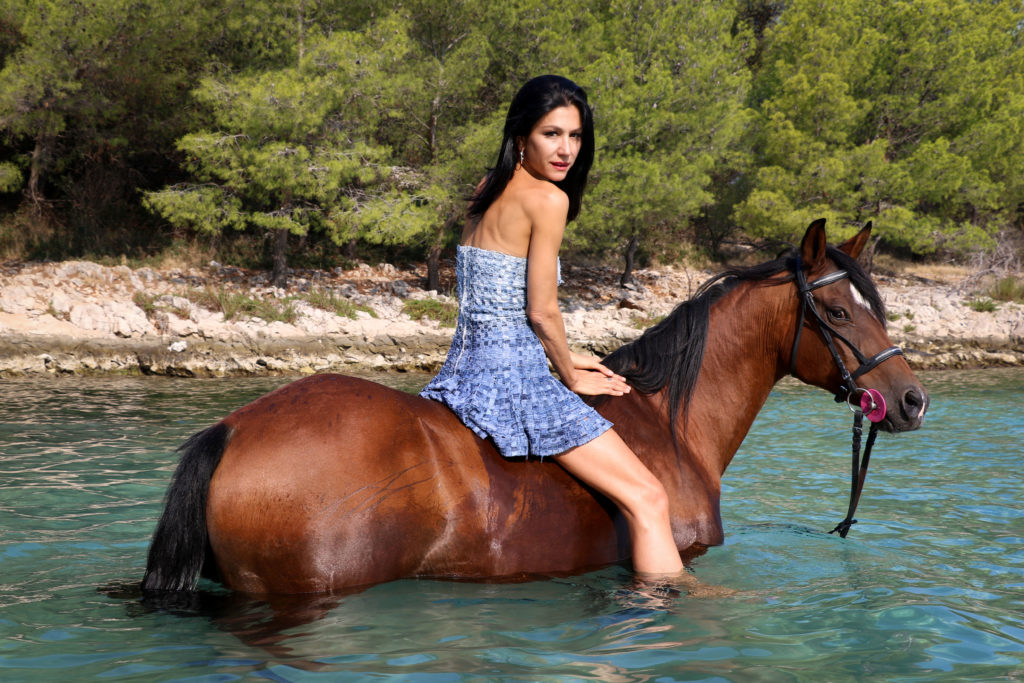
”I enjoyed every second of wandering around Brač with my cello. Playing in the Blaca Hermitage, the quarries, the Basilica of St. Lovre, under the starry sky of Lovrećina beach, as well as going in the sea with a horse, were special experiences. Although these were performances in front of only a few friends, I had the feeling that I was playing in crowded concert halls. I wore jewellery and fashion creations made by Brač designer Ida Stipčić Jakšić, a dress made of stone and dresses made of sea pebbles and jeans.
I’d like to give a special thank you to Mr. Markito Marinković for the household, young designer Anja Bolčević for the creation for the Dragon's Cave, our guide Zoran Kojdić for the historical stories, Kristijan Mutarello for the chair with the motifs of the Dragon's Cave and Bruno Miličko, a several-time Croatian champion in the super extreme class, who, with his Pinzgauer took us over some of the most demanding terrain. The first photo was taken next to the sculpture of an Angel with one wing by the academic sculptor Lovro Jakšić, and in response to the question "where is the other wing", the last photo was taken in a quarry where I have a stone wing. This completes my story from Brač this year.
The experience of the island from a completely different angle and the view from the perspective of a man who knows it very well, have completely changed my previous image of this, the largest Dalmatian island. I can't wait for my first free moment, when I will have the opportunity to get off the ferry in Supetar. Now I know that I am not coming to Brač, but entering a magical interspace that is somewhere between the sea and the stars,’’ Ana told us with enthusiasm.
Photo: Robert Barilla
Croatia Hot Spots Summer 2020. edition is OUT! Fill your summer with joy!
The best thing would be to sing the Dalmatian song ‘’no one can do anything to us’’, alas, in our Dalmatian paradise, the coronavirus crisis struck. The new normal posed a challenge, and we, aware of our potential, reciprocated with imagination and creativity, as a recipe for attracting tourists to our area.

And here are our excellent numbers, the announced and expected 30 percent of traffic when compared to last year's tourist figures was achieved. And in some destinations, that figure was well exceeded. And all this is thanks to the advice of the epidemiological profession, people’s adherence to the protection measures, and the hard work of everyone. This is how we managed to make ourselves stand out in Europe as the only country with significant tourist traffic.

And now comes the race to Croatia’s gems, to our most beautiful turquoise bays, to the attractions of the Dalmatian hinterland, to adrenaline tours, to the sights of Bol.
Croatia Hot Spots magazine - new edition is out!
Read online at Issue.com


Magic island Pag is summer Hot Spot destination!
We’ll take you to Pag, which has established itself as an island whose destinations are chosen by the world's most luxurious fashion magazines. We’ll reveal to you the secret of their tourist success and the reasons why they are achieving fantastic results this year.

We’ll then head to Central Dalmatia to show you the pearls you absolutely must visit this summer.

Then we’ll quickly transfer you to Jelsa on the island of Hvar, which has achieved some fascinating tourist figures. We will show you their model of traditional accommodation, sustainable tourism, in which a guest becomes a member of the family.

We will take you ashore, and head inland to the hinterland of Split, to the heart of the Dalmatian hinterland and show you a fresh attraction in the shape of an Indian village. Green valley retreat zone.
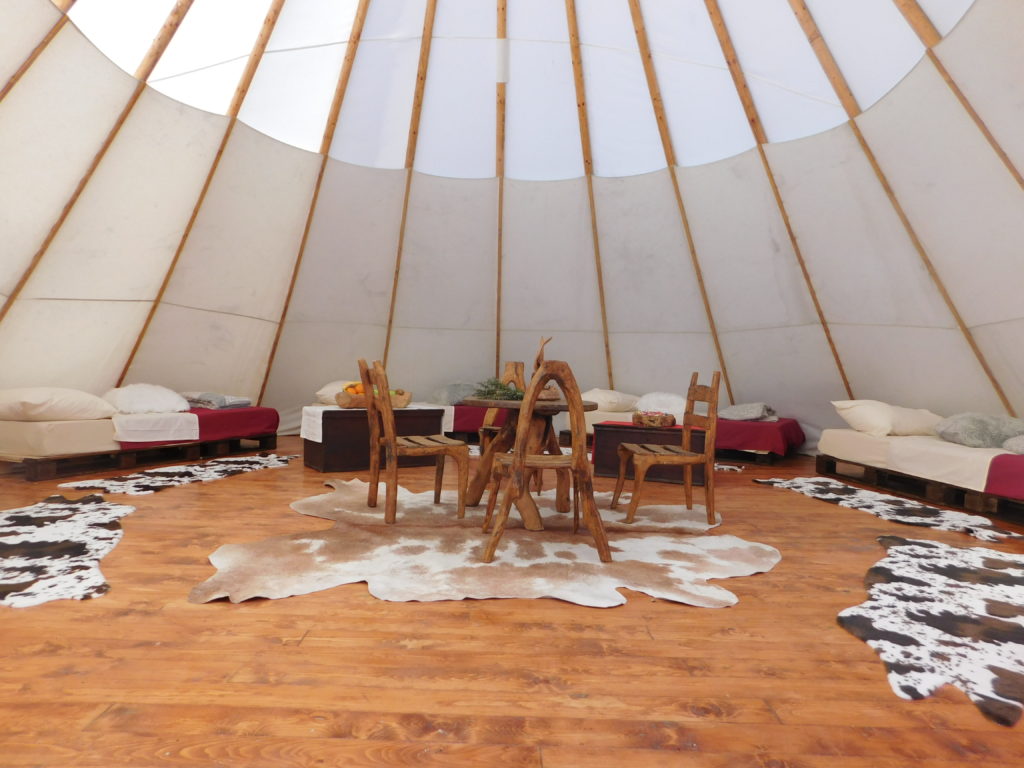
We will also recommend one of the most beautiful excursions in Dalmatia, the one which takes you to the incredible Blue Lagoon on Drvenik Veliki, where Max Nautika will be your guide.

On top of all of that, we’ll also reveal to you the excellent initiative of the Student Centre in Split, which has created a platform for attractive and never more affordable accommodation.

We will show you where this summer, despite the coronavirus crisis, you can celebrate, but also teach you how nothing can go without the golden drops of Dalmatia, the best Athena olive oil from Stari Grad.

.. embark on yet another adventure with us.
Read online Croatia Hot Spits magazina at Issue.com
Photo:archive TBs
Interview DOMAGOJ BEBIĆ "Creativity is the key to success"
THE FUTURE OF OUR TOURISM AS SEEN BY AN EXPERT – COMPETENCE AND KNOWLEDGE AS GUIDE MARKS IN DIFFICULT TIMES
In these seriously difficult and uncertain times, when coronavirus has redefined our reality in all its aspects, competence and knowledge have never been more significant. In these times of uncertainty, we have turned to people whose expertise and knowledge instil confidence and a sense of security.
We met with an expert of such kind, associate professor Domagoj Bebić, the holder of the chair on New Media and the head of the Department for Strategic Communication on Faculty of Political Science in Zagreb, and the coordinator and representative of all IPSA research committees – the greatest international association of political scientists. We talked about the interrelation of coronavirus and tourism, one of the most complex social-economical phenomena that has been significantly affected by the pandemic.

1. Lately, we have been witnesses of the dramatic effect of the pandemic on global travel – in which way has coronavirus particularly altered its dynamics?
I would like to point out that, at the moment, the most important thing for everyone is to keep ourselves and our loved ones safe. On the other hand, some people are pessimistic. If we take a look at the numbers, it all does seem a bit negative – air traffic is practically non-existent, there're a sense of fear among the world’s travellers, and I think we are close to a point when we have to redefine the term zero point and start with some new processes, and this will happen when we gain some more insight into the nature of this virus.
The global COVID-19 pandemic has definitely postponed the beginning of the tourist season, we have witnessed many reservation cancellations just several days before the tourist season as we know it should have started. I believe that uncertainty is one of the things that has affected this delay the most. The whole situation and its uncertainty as far as epidemiological measures are concerned have brought caution in terms of the booking of accommodation, as well as a decrease in the number of guests.
2. In your opinion, is it likely that this situation will have long-term consequences and permanently alter the travel market? Can you single out some of the specific segments where long-term changes are to be expected?
I believe that this should only be a kind of setback, but once the danger disappears, things will slowly fall back into their place and within a reasonable amount of time, the numbers will reach those of pre-pandemic times. I also believe that all of us will somehow change the way we act. Most likely with time we’re going to acquire some new habits, but we’ll certainly need some time to adjust and get used to the “new normal”. It is to be expected that after this storm the tourist market, the situation will start to stabilise and a new balance will be reached. I don’t think that this is the time for pessimism, but for an opportunity to learn a lesson and try to adapt to these new circumstances.
3. What about mass tourism? Is it, in the light of new events, a finished story?
Out there in the world, including here in Croatia as well, some new models of tourism have started to be encouraged such as sustainable tourism, green tourism, the growing and enjoying of organic food… The coronavirus situation only brought them up to surface and I think that it’s the right time for tourist workers to start to invest in them. As soon as the pandemic is over, sustainable tourism and the green economy will become the new normal. This new situation has prevented mass tourism from rising. As I previously pointed out, I believe we will, meaning all of us together, acquire some new habits and adapt to new trends. This situation will most certainly bring about some new trends and habits, but I believe that the tourist sector will soon recognise and adjust to the needs of guests. The Split-Dalmatia County Tourist Board has proved to be very successful in adapting to new situations on many occasions, which is the most important characteristic for successfully doing business in tourism.
4. What are your predictions about the nature of “new” tourists, or perhaps it’s better to say, the tourist of the future?
They are completely networked, the primary way of communication being social networks and new media. I believe this situation will encourage guests to be more open to different tourist offers, to explore new possibilities. The new type of tourist will be more open to somewhat different, specific offers and vacation models.
5. How do you envision Croatia on the world tourist map? Is there a segment in which our country as a destination can look for an opportunity or do we have some special advantage?
Croatia is one of the leaders in exclusive and expensive tourism. In this segment we are very creative, developed and expensive – which I don’t think is bad. In my opinion, this sector attracts global emissive markets, although there is a dose of public criticism on the exclusive part of tourism, but this is the branch in which we can offer the most.
I’ve already singled out the Tourist Board of Split-Dalmatia County as a leader when it comes to adapting to new situations, new trends and novel needs of tourists. We should also keep in mind that the advantage of Croatia is its natural resources that enable guests to try numerous possibilities in just a few minutes' ride. From secluded beaches, programmes in city centres to being able to enjoy themselves in isolated locations full of unexplored natural beauty.
6. What would you recommend to the leading people in Croatian tourism – what should be the base of their marketing strategy?
Creativity. This is the key to success. We are definitely not that creative, and we have every right and freedom to be. The audience’s span of attention has decreased, their hectic lifestyle has changed their habits, so it’s important to emphasise the creativity of the content to attract the attention of the target audience. Also, all discussions on global markets point out the importance of providing tourists with information about security, which has to be specially emphasised during this period.

Domagoj Bebić is author of the book -Cybertourist, new media in tourism.
Cybertourism stands for the change in tourist communication patterns and tourist promotion. Due to the change that was introduced with the rise and popularisation of new media today we
deal with completely new communication rules and practices. The development and popularisation of social media has redefined core media practices.
Stories from Bol are travelling the world!
Would you like to find out more about organically grown products that you can eat in Bol on the island Brač or where to buy locally produced goat products and extra-virgin olive oil? Maybe you are interested in finding a fisher monger selling freshly caught fish or restaurants where you can enjoy local specialities prepared with wild herbs? Or perhaps you would like to get lost in the sweetest daydreaming while listening to the beautiful sounds of the guitar?

Our stories from Bol, a new project by the Bol Tourist Board (TZ Bol), will tell you all. With an idea to emphasize the unity in the local community, their mutual support, and the importance of the local population with tourism written in their DNA, TZ Bol has brought the locals together to send a simple message “See you in Bol!”,to all those who have already visited this beautiful town, as well as to future visitors of this delightful and scenic town located in the south of the island of Brač.

They wish to share first-hand stories with their guests, stories that cannot be found in magazines, about irresistible tastes and scents of local food and products, about wild plants and herbs, and about an authentic experience of this town in all its beauty.

And here we do not only refer to the famous Dominican monastery from which you can enjoy a scenic walk to one of the most beautiful beaches in the world, Zlatni rat, or attractive biking trails, but also to the generations of dedicated people that make this small town so charming.
In the perfectly imperfect video clips and photographs, Franci Marinković from the Pusa restaurant shares his story.

Apart from the adored specialties with wild herbs, he always enchants his guests with singing and guitar playing.
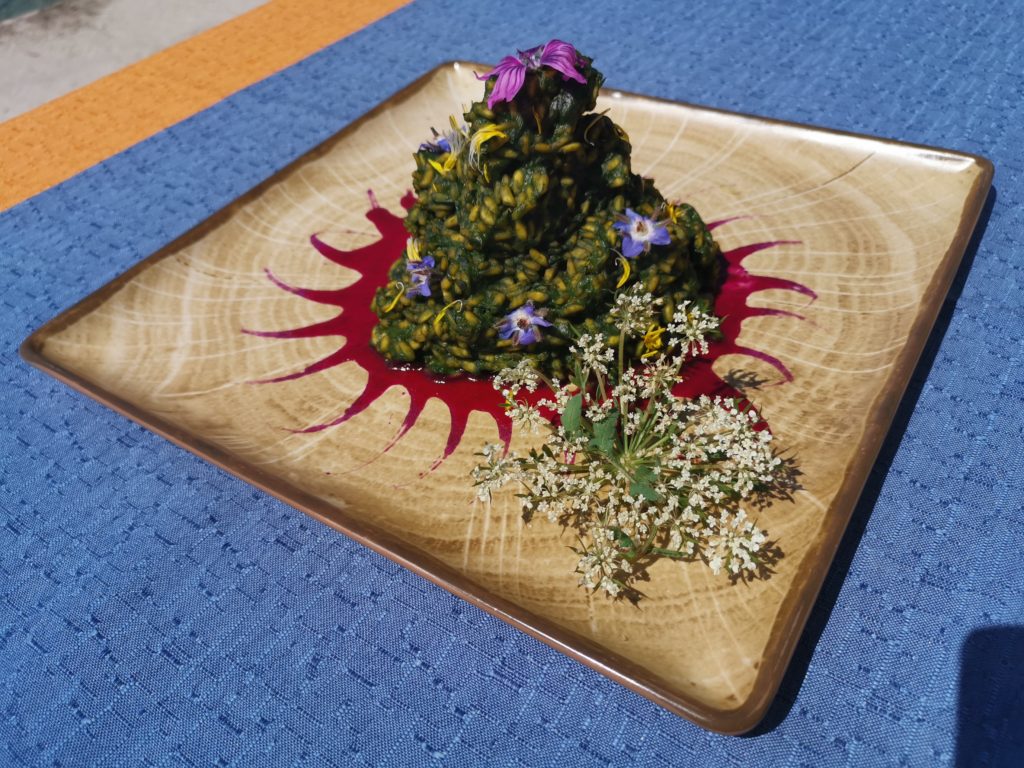
For almost ten years, Meri Bodlović and her husband are dedicated to organic farming, and olive and wine growing on their family farm.

Mirjan and his Mom, Irena, are successfully combining farming, production, and catering.

Their specialty, Cheese in sugar, can be tasted at their tavern Dišpet.
Nikica Bodlović from the Bodlović family farm proudly talks about olives and their family olive grove with 250 olive trees and golden drops of their extra-virgin olive oil.

Pravdan Katić, a professional fisherman with 15 years of experience, enthusiastically talks about his job. While playing the guitar, a favourite summer instrument, Pjerin Jugović sings and plays the same way he used to many years ago to attract tourists.

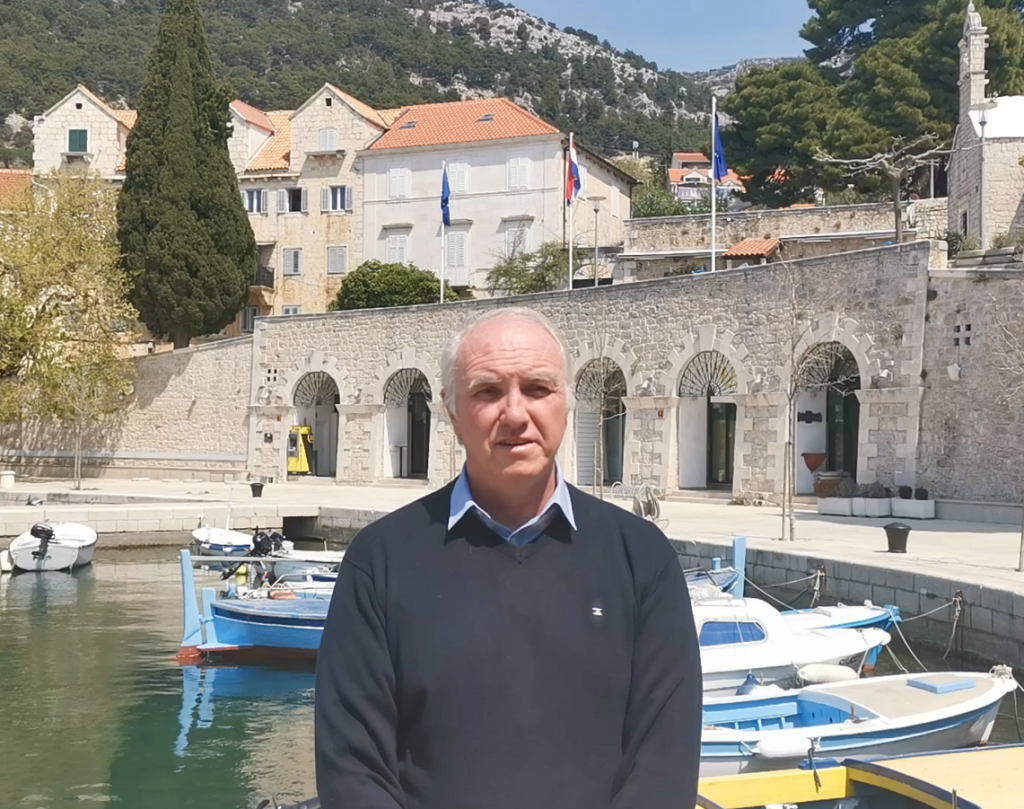
The director of the Bol Tourist Board, Markito Marinković remarks: “This project aims to engage the local population in active promotion of their town. We would like to introduce our guests to people that will be there for them during their stay in Bol. I believe that this is a winning formula because who can tell the stories of Bol better than its people? This is also an opportunity for Bolke and Boljani to actively participate with their suggestions and engagement in the joint promotion of our Bol.”

This is just the beginning of the TZ Bol narrative that will present accounts of their citizens and positive local experiences over social media, IG and FB: Bol - Bol - Symbol of the Adriatic, in the following months.
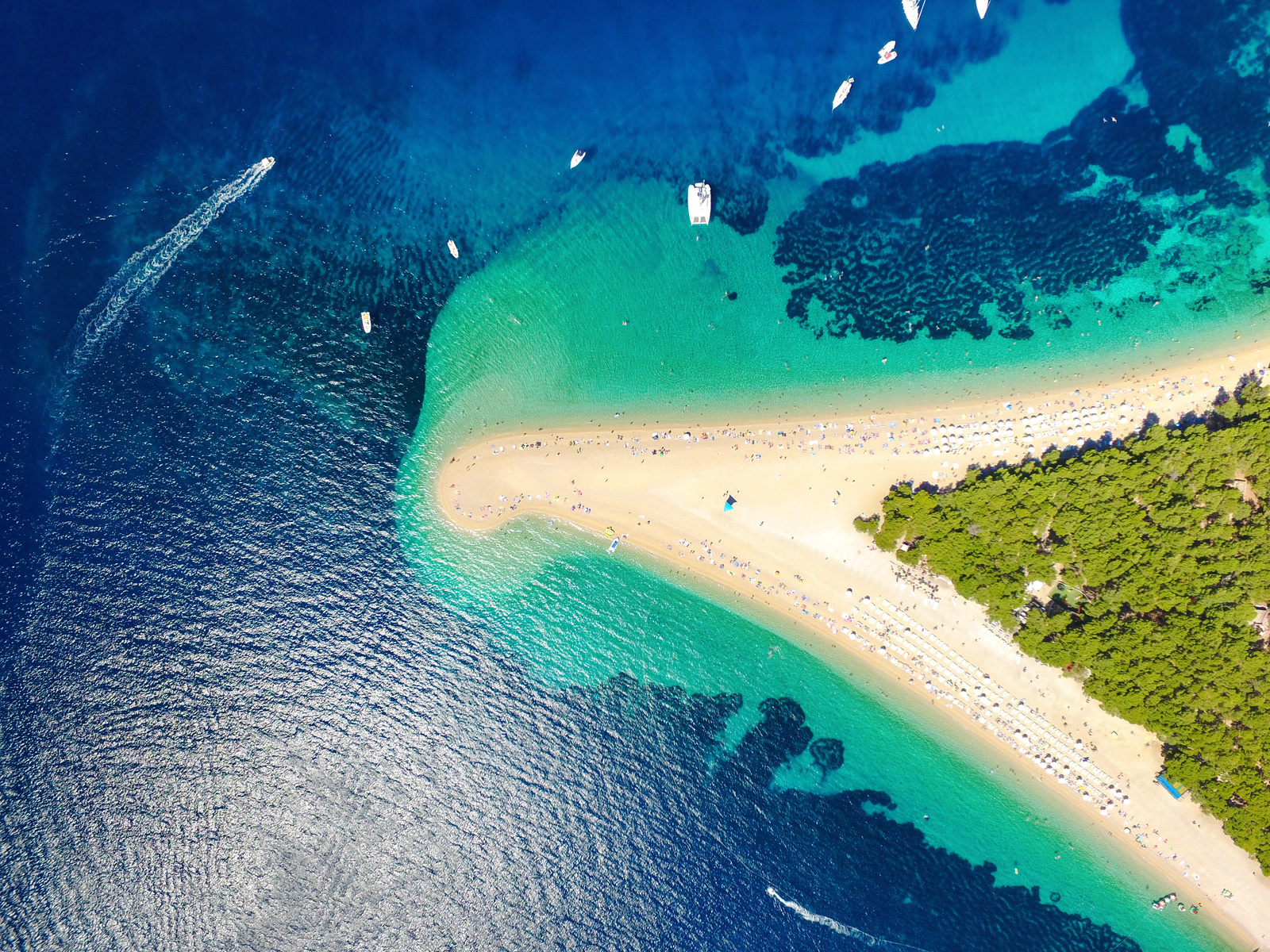
PROUD AND UNITED IN PRAYER The 500-year-old Hvar tradition of the Procession "Za Križen" will continue this year
Procession "Za Križen" (Following the Cross) is a unique religious rite that has been held continuously since the year 1658
There is no island sacral manifestation that is more monumental, and at the same time more mystical, touching and traditional than Hvar’s internationally known Procession "Za Križen" (Following the Cross)

It is not just a ritual in which the faith and piety of the people are manifested; in the case of Hvar, it is an event of the people that has been reflected in its continuity for five centuries. It takes place on the night of Maundy Thursday and Good Friday, and is performed as a religious sequence consisting of six processions that simultaneously move to six Hvar towns. And they never meet during this night-time procession.
The procession is a unique religious rite that has been held continuously since the year 1658, having experienced a partial interruption during World War II. Back in 1943, the Italian fascist authorities forbade the island to participate in the procession. Only the closest entourage participated in the event with the crossbearer. One year later, in 1944, the procession was banned by the Nazi authorities on the island.
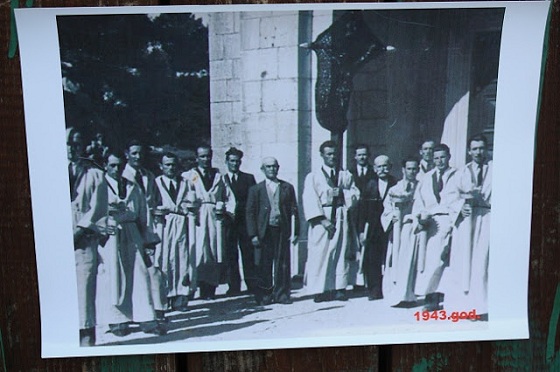
At that time, in El Shatt, there were in fact a large number of people from Hvar who initiated that tradition from their native island and organised the procession in Egypt, with the consent of the British refugee camp command. Dining rooms represented churches, and even improvised altars were erected. About 8,000 people participated in the procession, including the Allied soldiers. The memory of this procession, apart from a few preserved photographs, has also been preserved by the crosses from El Shatto which are kept in the parish churches. The Procession of the Cross was inscribed on the UNESCO List of Intangible World Heritage back in 2009.
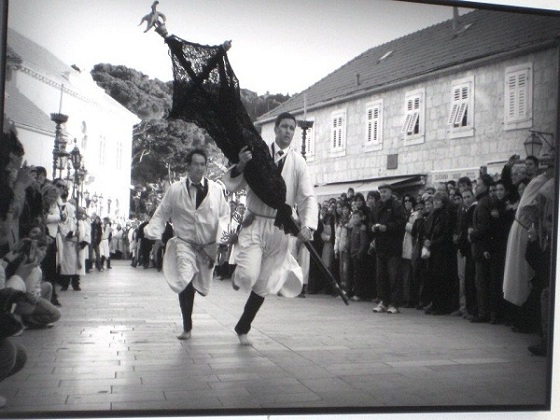
Once again this year, despite the coronavirus crisis, this unique religious event will take place from Good Thursday to Good Friday, on April the 9th, 2020. Only the closest entourage will participate in the event with the crossbearer, following all of the recommended social distancing measures.
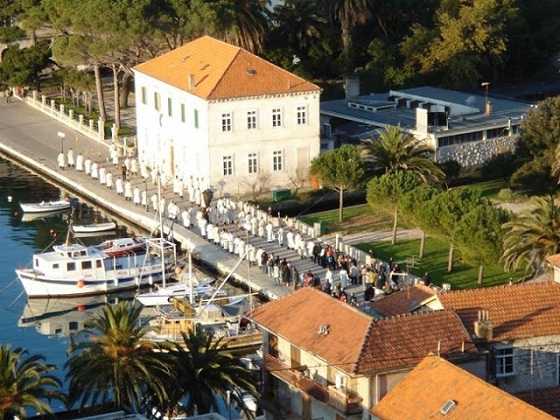
The highest honour in this story is worn by the bearer of the cross, a key person carrying an 18-pound heavy cross.
This role is of great pride for every citizen of Hvar, and in life, sometimes with a wait of 20 years, only a few get to enjoy this rare opportunity. Most often as a fulfillment of a vow made to oneself, or at the family level.
In deep silence, filled with prayer, and deep religious worship, the cross bearers and believers, in a long continuous column, begin their journey with the procession, presenting in the most beautiful way a memorial of religious love always bound in suffering.

The procession simultaneously starts from the parishes of Jelsa, Pitve, Vrisnik, Svirce, Vrbanj and Vrboska. It has moved for centuries in a given trajectory, clockwise, without meeting and ending in the initial parish. If the processions were to encounter one another during that long night-time journey, the people would mark something like that as enormous bad luck. The procession also has its sacred music, an eighth-century octosyllable text of the Lamentations of the Virgin Mary, performed by cantors. The Procession Following the Cross is one of Hvar’s traditions, which every year records an increasing number of believers from the country and the world. They usually describe their participation in this event with the word - magnificent.
Photo: archive of tourist boards of the island of Hvar
More: TZ Jelsa
Intangible heritage of Dalmatian Zagora – an important element of cultural and national identity
Apart from series of natural and gastronomic goods, our country is also proud of admirable collection of UNESCO-protected intangible cultural heritage - by representation first in Europe, third in the world!

Considering the amount of cultural heritage that our country cherishes, the list is expected to expand in times to come.

Intangible heritage encompasses different shapes of folk and traditional cultural expressions – language, oral literature, music, dance, games, mythology, ceremonies, customs and traditional crafts; but also living communities where these shapes of culture are being cherished in.

The most famous of them all, the pride of Sinj and Cetina region, is an equestrian game Sinj Alka. It has been established in memory of the victory of Sinj people against the Ottomans in 1715; and as a gratitude to Our Miraculous Lady of Sinj who, according to a legend, saved Sinj and its defenders. From then on Alka has been performed in almost uninterrupted continuity. The game is regulated by Alka statue book that includes rigorous rules that ensure its authenticity, its origin and purpose. It has been protected by UNESCO since 2010.

Ojkavica is a characteristic singing with many melodic fineries, the most basic being shaking technique on the syllabus "oj", which can be at the beginning, in the middle or at the end of the song. Two or more singers sing in multi-part, strongly and loudly, while the song lyrics are mainly very unique and suggestive.

It is sung in entire Dalmatian Zagora, while in Sinj its traditional name is rera. It has been protected by UNESC also since 2010. Even to this day it is passed on from one generation to another thanks to perseverance of cultural-art societies and folklore groups.

With their continuous efforts they are saving rera from oblivion, as well as another UNESCO-listed cultural good – Silent Dance. It is a type of dance cherished in Dalmatian Zagora and unique for the way in which is performed – in circle, or more often – in pairs that move in circles or freely along the dance area.

Sometimes it is danced accompanied by rera, ganga, ojkavica or bagpipes, but in Dalmatia Zagora, almost exclusively without any musical background.

Today it is danced (although more rarely than before) for carnivals, on fairs, folk parties, weddings, local, regional or international folklore festivals and on local festivities in patron saints’ honour.

Ministry of Culture of Republic of Croatia protects numerous endangered intangible goods, with aim to cherish, protect and preserve them. One of these goods is the art of making boats in Otok near Sinj. It is a specificity of this region, which arose from the fact that Otok is in near vicinity of the Cetina river.

Written records about the beginnings of boat building do not exist, but the oldest preserved boat is about seventy years old. Economic activities (mostly agriculture), the number of inhabitants and the very position of the village are the main reasons for making Otok people use boats more intensely than others in their surroundings. Depending on the river depth, they used to paddle while sitting or even standing.

Annual carnival processions in villages under Kamešnica in the area of Sinj and Trilj town and Otok municipality have a long tradition and are the best promotor and keeper of carnival customs in these areas.

The processions are unique and original way of presenting ancient customs, frequently accompanied by the sounds of carnival bells and other specific rituals. The most attractive part of the procession are noisy and colourful didi, with 1,5 metres high sheep skins on their heads and bells around their waists.

They are dressed in old clothes with colourful tassels and embody ancient struggle of good spirits and the winter, which they try to chase away with noise and jumping. Didi from Kamešnica have recently been guests of a famous carnival in Sardinia, where they have successfully showed a part of our tradition outside our borders.

Klapa singing is a traditional multi-part a cappella homophonic singing. Klapa songs are recognizable by their music structure, harmony, melody and lyrics. Despite various external influences, klapa song has kept its originality and faithful audience till today.

One of the old crafts that are on the verge of extinction is – traditional hand-wheel pottery from Potravlje. It was announced intangible cultural good in 2013, and the Ministry of Culture has nominated it for UNESCO protection. In our regions it has been used since the 4th century B.C., while in greater part of Europe this type was long ago replaced by foot-wheel pottery.
Unique
artistry of making clay dishes in this fashion has been only preserved in
Potravlje village in Hrvace Municipality – in only two families: family of Jure Knezović, where his sons Ivan and Pile have carried on the tradition, and
the family of Jure's brother Dušan Knezović.

The potters from Potravlje, or, as they are usually called in this region, bakrari used to supply the whole Cetina Region and greater Dalmatia with their products

Up to the present day, they have sold their products at fairs in Sinj, Trilj, Zadvarje, Vrlika, Metković, Benkovac, Split and elsewhere. Apart from traditional pots, new types of pots are made nowadays, for instance, amphoras (for tourist purposes), flowerpots or pitari, and various miniature traditional pots sold as souvenirs.

It is of utmost importance to preserve this part of our traditional culture and enable it to continue developing by passing on the knowledge onto young generations. With this goal in mind, Sinj Tourist Board, supported by the Ministry of Culture of Republic of Croatia, has been regularly organizing workshops of traditional hand-wheel pottery from Potravlje. For this effort it was awarded Plautilla award in category of The best cultural-tourism product. Great attendance rates and good feedback from foreign and national visitors, especially the young ones, bring hope that this craft is to live on and blossom.

Preserving endangered intangible heritage is an important factor of not only cultural and national identity, but also of continuing efforts to blend these unique and priceless goods into our great tourist offer, all in correspondence with the laws of sustainable development.
More: www.dalmatia.hr
Photo: www.dalmatia.hr, croatia.hr, archive of tourist boards of Split – Dalmatia County

Discover the ‘’Game of Thrones’’ filming locations in Central Dalmatia
In Central Dalmatia, tourists have an incredible opportunity to step into the fantasy world in the blink of an eye, right into the cinematic scene, to the very locations where the legendary HBO series ‘’Game of Thrones’’ was filmed.
The whole world has long since known that one of the most watched and popular television series in history was filmed in Croatia. And regardless of the fact that the filming and broadcasting of the series has now been completed, fans' interest in visiting the series’ filming locations hasn’t ceased.

Owing to this mega project, Dubrovnik has become the dangerous city of King's Landing, the stronghold of the powerful Lannister family. But it isn’t only the ramparts, towers, and lookouts of this city which have become a draw for fans of the cult series, there are also numerous locations across Split-Dalmatia County that are enthusiastically visited by fans of the series.
Split and Split-Dalmatia County were attractive to the authors and creators of the series precisely because of their original historical locations, and because of the fact that the scenery was original here and that it only had to be adapted to the story of the series with the use of some special effects.
Split, a city under UNESCO heritage, with its perfect historical
construction, delighted GOT screenwriters who, at the city’s very heart,
discovered fascinating locations for filming the series. And then they realised
that the environment of Split is just as powerful, deciding to shoot some of
the most important scenes of the global spectacle in this part of Croatia, and
then to place all of those those locations on a map of the GOT locations that
every serious fan of the series must visit.
DON'T MISS ANY IMPORTANT
DETAILS!
In order not to wander aimlessly, the Split-Dalmatia County Tourist Board has made sure to invest significant marketing resources in promoting this project and has prepared an attractive map of Game of Thrones filming locations.
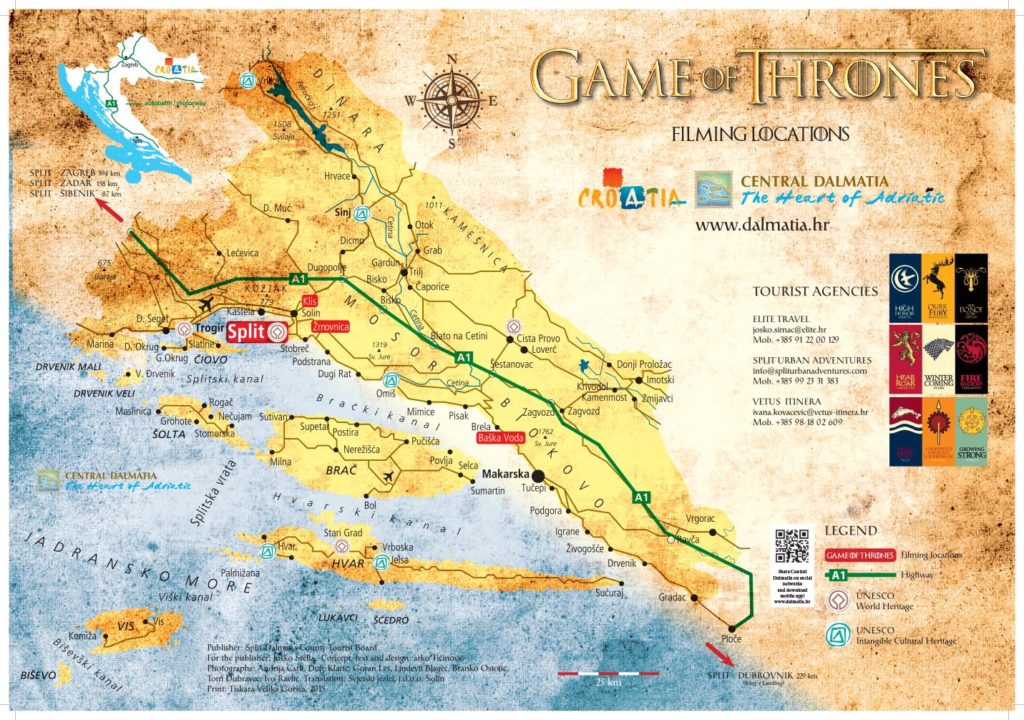


Game of Thrones filming locations in Split-Dalmatia County:
- Split - Cellars (Podrumi)
This truly monumental space, which stretches beneath the famed
Diocletian's Palace, is breathtaking in its beauty. The stone structures, the
arches, the secret passages, the impression of cold that the underground world
provides are all part of the home of the former Roman emperor Diocletian.

These cellars are an unavoidable stop for many tourists. And since this very old area in Split became a GOT site, numerous fans of the series have come to see it. Desiring to feel the atmosphere, the mystique of the dungeons, the room where the powerful Daenerys locked her famed pet dragons.

Here, among the smooth stone walls below Split, from which dragons cannot escape, some of the cult scenes were filmed.

2. Split - the alleyways
After the cellars where the stone atmosphere creates a pleasant cold even during the highest summer temperatures, a climb to Peristyle awaits tourists. This is a fascinating imperial square, with its open-plan setting. And then an easy walk to the streets of Split, across the old stone floor, past the facades of the houses where people still live today.

Here, in the veins of the city, Daenerys's slaves were plotting around the fire to conspire, thinking up their new moves. In the palace, the Mother of Dragons filmed numerous scenes, including the one where she sat on her throne.

3. Klis Fortress
The view of it is fascinating, the view of a huge powerful
building on the top of the mountain near the sea, from which a beautiful view
of the valley, Split at the foothills, the coast, the islands is offered. In
the GOT series, it is in this historic building that the scenes of the largest
of the great city-states of Slaver’s Bay, Meereen, were filmed.

Klis Fortress came to the forefront in the season in which Daenerys conquers the city of Meereen. Fans of the series will remember her as the site of a masses of scene, packed with slaves dressed in modest togas, who flooded the gravel paths leading to the medieval building.

This is exactly where Khalesi publicly impaled the disobedient city authorities for everyone to witness.
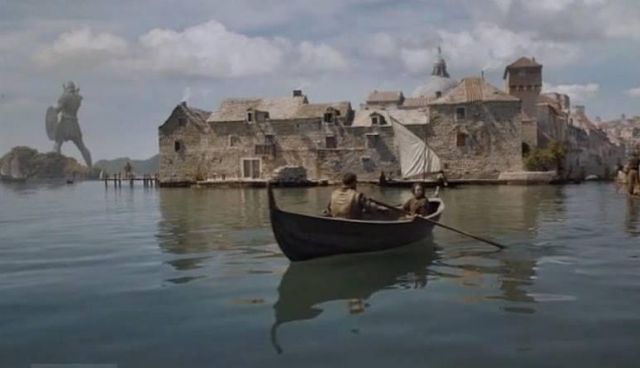
4. Kaštel Gomilica
Remember Braavos, a seaside town, and the scene where young
Arya mysteriously stands on a pier? This scene was filmed in Kaštel Gomilica, a
small town not far from Split, and at its heart is a medieval castle belonging
to Benedictine nuns.

It was in this small, peaceful, beautiful town that Arya transformed into Cat, took on a different identity, and found her temporary home in the home of fishmonger Brusco and his daughters.Upravo u tom malom, mirnom, prelijepom gradiću,

We definitely recommend a visit to this film site, where you can enjoy the beauty of the old town, historical buildings, and movie scenery right next to the crystal clear sea.

5. Trogir
Can anything be done without it? Can GOT be filmed in this area
without the film cameras stumbling into one of the most gorgeous cities on the
Croatian coast, among the alleyways framed by towers, into a beautiful, living
and breathing UNESCO living monument? No, it can't.

In the series, Trogir '’starred’' as the Qarth trade port, in which wizards imprisoned Khaleesi’s dragons. It is an impressive building that you should definitely visit, to feel the spirit of a city that has preserved its old soul in modern times.

6. Žrnovnica
Another location near the city of Split, which, due to its
exceptional natural beauty, has become the perfect getaway for locals.
The screenwriters discovered it and spread it around the world, and it will remain interesting in a scene that was gladly watched and commented on among the male population of GOT fans. This is a scene in which Missandei, one of the series' most beautiful actresses, appears, as does the bathing scene in a clear river. That river is Žrnovnica, there is also a water mill known as Antoničin mill in which the hosts grind various types of flour to this very day.

Also nearby is a quarry where the extras practiced their war scenes. This is where the shot was taken in which Daenerys arrives in front of the walls of Meereen, and the one with a duel between Daaria Naharis and Meereen’s champion.

7. Biokovo
The mighty mountain above the Makarska Riviera with its perfect
stone boulders, vantage points, chasms, wild unobstructed nature, numerous
gravel paths, the danger that threatens the uninitiated, and the sort of pride
that only sheer perfection can possess, served as the backdrop ideal for GOT.
And that was for the scene with the flying dragons, these
mighty winged creatures, which, from the heights of the Dalmatian massif,
plunged toward the sea, into the unbeatable beauty of this region.
Daenerys' dragons flew in the area of Baška Voda. More
specifically, back in 2014, these scenes were shot at two locations in the
Baška Voda Municipality. The first location is Greben, located between Baška
Voda and its hamlet of Topići (about 300 metres from Baška Voda and 100 metres
from Topić). The other location is Dvori, located above Promajna, a village 4
kilometres south of Baška Voda.
Both locations are marked on the ground and on maps of the
Baška Voda Tourist Board, and they are also discussed in the section of the new
Baška Voda Tourist Board website called Film Sites.
Photo: archive of TB of Split Dalmatia county , dalmatia.hr, Game of thrones

Top ten reasons to visit Central Dalmatia
Top 10 attractions of Central Dalmatia!
There is never enough time to visit all of the beauties of Split-Dalmatia County, its towns, imperial squares, palaces, caves, panoramas, viewpoints, bays, fortresses. However, to make the choice easier for you, we recommend ten top destinations, which are simply perfect, special places to visit.
Visiting these ten sites will help you find out why they call the Split-Dalmatia County a paradise on Earth.

1.Zlatni rat (Golden Horn), Brač
Island
It is a unique natural site, a
400-meters-long-cape which blends in with the crystal clear sea. It is a
worldwide phenomenon due to the change of direction of the tip of the cape,
depending on the seasons, wind and sea currents. It is one of the most
beautiful beaches in the world, sprinkled with perfect, soft white pebbles.

2.Hvar - Paklinski Islands
The archipelago consists of 20
islands and cliffs that extend in front of Hvar town, on Hvar Island. They
include perfectly preserved nature, offer crystal clear sea, a paradise for
people who adore sailing, swimming and diving. The most famous daily-excursions
sites in the archipelago are Jerolim, Stipanska, Ždrilca, Vlaka and Palmižana.

3. Cetina River
Cetina River is the pearl of Split's
hinterland, with its stream that is both wild and lazily calm at points. It runs
through untouched nature, offers loads of excursion areas and delivers top
quality gastronomic offer in its zone. Make sure to visit Gubavica Waterfall
and the navigable canyon of Omiš..

4.Trogir – Cathedral of St.
Lawrence
The cathedral was built in the
13th century, and its perfect beauty stands for one of the most beautiful
Renaissance monuments in Europe. Make sure to check out Radovan's Portal, a
true masterpiece of art carved in stone, as well as the bell tower, with it 47 meters of hight –
it holds the title of the most beautiful one on the entire Mediterranean coast.

5. Solin - Salona
In the immediate vicinity of
Split, near the small town of Solin, lie the remains of the ancient city of
Salona, dating to the 4th century BC. You will be amazed by the preserved
history, the view of the old spa, the bath area with furnaces and changing
rooms, the remnants of the forum, temple and theater.

6. Split - Diocletian's Palace
The palace was once home to emperor Diocletian, and is one of the best preserved monuments of Roman architecture in the world, in which still live their daily lives. It is full of old houses, squares, cellars, ramparts.

The world got to know the Palace from the GOT series – by sequences filmed in its inner sites, just a few dozen of meters away from what used to be Diocletian's living room.

7.Sinj – Alka Tournament
It is the most famous old
knight's game or tournament from this area, which celebrates the victory over
the Turks in 1715, performed every first Sunday in August. The tournament is
played by "alkari"
knights and spearmen, who must aim the center of two concentrically placed metal
rings, from the back of a horse in full
gallop, with a spear 290 to 300 centimeters long.

8. Biševo - Blue Cave
Five kilometers from Komiža on
Vis Island, the islet of Biševo is located, with its beautiful Blue Cave, which
can be accessed only by small boats on oars. Sunlight penetrates the second
opening hole int he cave, thus giving it its mesmerizimg characteristic blue
color.

9. Biokovo Nature Park
The highest peak of this mountain
range is the St.Jure (Croatian for George) at 1762 meters, from which you can
get to see all the way to Italy, on clear days. Be sure to visit Kotišina – the
botanical garden on the slopes of the mountain, and enjoy numerous geomorphological
phenomena with a licensed guide.

10.Imotski – The Lakes
The Red and the Blue Lake, located right next to the town of Imotski, are natural phenomena, favorite locations for daily excursions. The Blue Lake is a swimming zone during the summer, but when its bottom runs dry, it becomes a football field. The Red Lake is considered to be the deepest lake in Europe. Due to the steep cliffs that surround it, it cannot be accessed from close proximity.
More: www.dalmatia.hr
Photo: www.dalmatia.hr, archive of TB of Split Dalmatia county,

Top manifestations in Split - Dalmatia county attracts tourists from all over the world
Split-Dalmatia Tourist Board is very active in supporting projects that lead to continuous development and strengthening of tourist offer, especially that of pre- and post-season.

Wise consideration and design of numerous manifestations and quality events are becoming a precondition for development of year-round tourism. Importance of investing in important themes that are to enhance this kind of offer has been recognized this year as well by Expert Committee of the Tourist Board.

Therefore, 400 thousand kunas of non-refundable funds have been given in 2019 as a strong boost and a mighty financial support to several top events and manifestations. Great number of participants, praises of foreign and national media and great feedback have shown that these assets reached good cause. And the most important thing, the focus of tourist offer has been widened outside the prime season. Furthermore, it also ensured an excellent path for positioning Split-Dalmatia County as one of the main subjects of destination tourism.

- Dalmatia Ultra-Trail 2019
4th edition of this event has presented Dalmatia to the world as a hit destination of sports tourism, and gave to Omiš town, since it is a central place of the event, a nickname of Cradle of Croatian trekking and trail.

More than 900 runners from 30 countries participated in this international race, who brought back to their homes the best possible postcard from Croatia encompassing even 5 mountains, three rivers and numerous historical and cultural localities on the area between Kaštela and Tučepi.
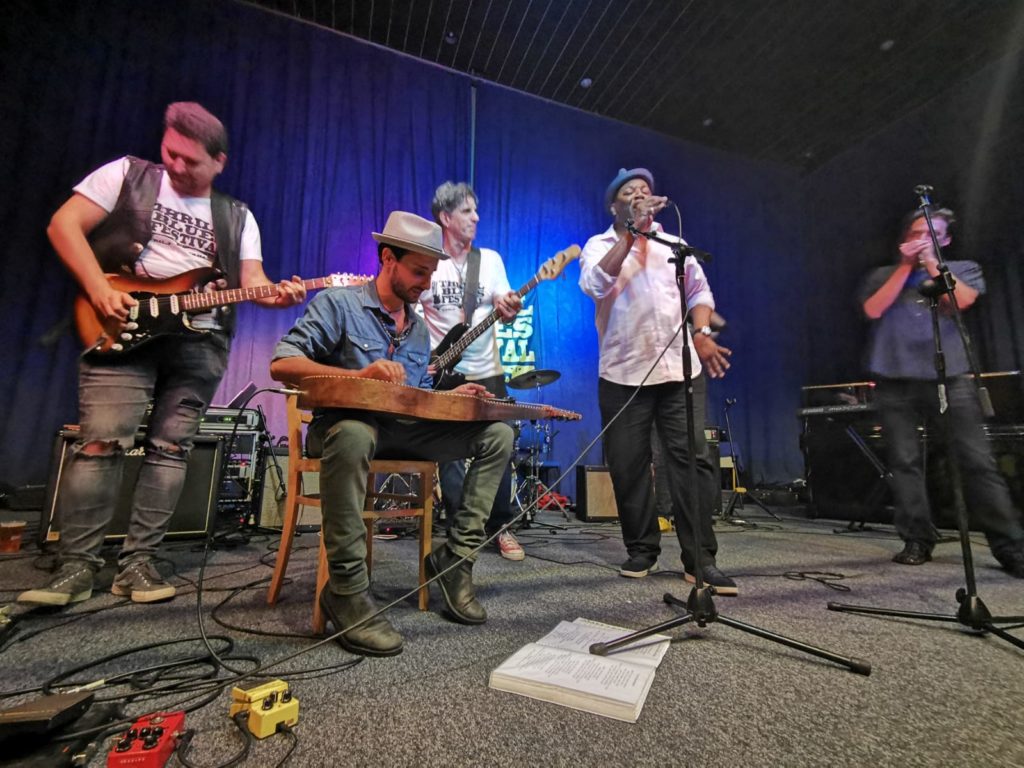
2. Thrill Blues Festival After only three years of this festival Trilj has become a centre of blues, transforming Cetina region into a mecca of excellent music.

This exceptional cultural manifestation each year gets more and more accompanying events, like blues workshops for children, book presentations and concerts of national and foreign renowned blues masters.

3. In
honour of Croatian music
Weeks after
it was held, concert To je moja zemlja
(It’s my country) on Split’s Poljud was the main topic. Praises kept coming,
not only for performances of the greatest national names and legends of
Croatian music scene, but also because of charity for Split hospital. It was a
gathering of the greatest Croatian music performers, but also an eruption of
emotions that shook the entire Poljud stadium.

4. WTA Croatia Bol Open
Tennis tournament in Bol on Brač has crossed Croatian borders long time ago, thus introducing Bol as a destination with multi-profile contents.

This year also, a place famous for one of the most beautiful beaches in the world, has been visited by numerous guests, who were welcomed by a tourist message – that the entire place lives for tennis. Same as the tournament and tennis live with the entire community.

5. 53rd Festival of Dalmatian A-Capella Singing Groups Every year on a small Omiš square same thing happens – the song. True, original, Dalmatian, a-capella, polyphonic and unique, recognized as an ultra-cultural event and a tourist treat.

Omiš festival of a-capella singing groups is a recognizable manifestation with its loyal audience and music that promotes the spirit of Dalmatia in a genuine music genre.

6. Split half Marathon
Sunny streets of Split hosted 2810 runners; 2450 in races of half marathon and relay race half marathon, and 360 in “Trophy of Slobodna Dalmacija” race.

In this popular sports event numerous famous people have participated, amongst them respectable politicians, athletes, persons from cultural and public life. This year’s edition will be remembered by co-operation with Moscow marathon, whose representatives participated both in the race and the fair.

7. Sinj Alka
A battle of chivalry, strength, skills, a demonstration of a steady hand, eagle eye, a folk celebration, a not-to-miss event: all this is Sinj Alka, whose this year’s winner is Frano Ivković from Brnaze.

He will be remembered for two scores in the centre and his statement that he has to thank his Luna and steady gallop for his victory.

8. CRO Race 2019
Cycling world has excitedly kept track of this year’s edition of international professional cycling stage race, which brought to our roads top names of this sports discipline.

Also, it sent fabulous postcards from beautiful localities of Croatian continental and coastal area.

9. Pirate Battle Omiš 2019
Over the years Omiš pirate battle has been transformed into a unique tourist attraction, with over ten thousand spectators.

It is an incredible manifestation in which a great number of costumed people participate, offering the spectators a vivid presentation of strength, courage and chivalry of Omiš ancestors and a victory over superior Venetian enemies.
More: www.dalmatia.hr
Photo: www.dalmatia.hr, archive of TB of Split Dalmatia county,

The most beautiful wedding locations in Central Dalmatia
The ideal scene for the most important day of your life
Gastronomers, moviegoers, salty sea dogs, and also romantic
souls all love it. Split-Dalmatia County has won numerous awards on several
occasions - in the tourism profession and thanks to the praises of satisfied
guests, for whom this area of Croatia never provides a difficult time, with
keen reviews and a few warm recommendations, which then gives it a high rating
on one of the online travel portals.
It is on the radar of adrenaline lovers, it boasts very
specific local gastronomy, is showcased in a globally popular TV series who
came here to search for filming locations… but it is also on the radar of
romantic individuals who, in its fabulous locations, have recognised that this
is the ideal backdrop for their most important day!

Due to the mild climate and plenty of additional amenities, but also because it’s less crowded and there are many more affordable prices, the favourite months for weddings are April, May, September and October, and favourite locations range from mystical historic fortresses and romantic castles to idyllic natural settings.

Discover what it is all about with us, and catch a breath of inspiration for your dream wedding!

1. Fortica Fortress,
Hvar.
Imagine drinking a glass of sparkling wine while enjoying a
unique view of Hvar Town and the surrounding Pakleni islands, in a beautiful
historic setting from the beginning of the sixteenth century! Fortica Fortress,
also known as Spanjola, was constructed during Venetian rule and was then
restored in 1579 - it will give you this great experience.

Architecture and military history, a collection of amphorae and other artifacts from the Age of Antiquity are just a fraction of the intriguing sights that this fort offers, and Hvar's delicacies from the wedding menu - especially the beautiful seafood and great local wines such as the gorgeous Plavac and the indulgent bogdanusa, which will be even more delicious in such a special environment!


2. Zlatni rat (Golden
horn) beach, Bol.
Did you know that the tip of Zlatni rat, that fascinating, shape-shifting,
natural horn, is a favourite place precisely for weddings? Even a few foreign
guests have said their fateful yes to the registrar, but also to the
translator, and since this year Zlatni rat has been proclaimed the most
beautiful beach in the world, we have no doubt that its popularity as a wedding
venue will increase as well! If you want to spoil your guests' palate, you will
surely succeed with the famous Brač lamb, the emblematic hrapoćuša cake, and
the finest Plavac and seductive, fruity taste of Pošip, so make sure that these
Brač gastronomic ambassadors are firmly on your wedding menu!

3. Klis fortress.
Is it not highly symbolic to say your wedding vows in the
setting of a fortress that was once the main source of defense in Dalmatia, and
has been conquered over and over again throughout more than two thousand years
of its history?

If you want to tie the knot and establish your love by taking your vows right there on Klis, do not miss to include the famous, well known lamb from Klis on your wedding menu, and let this symbolic location encourage you to conquer one another - for life!

4. Fortica, Vis - Fort George.
Many people will want to choose this location for their
glamorous wedding celebration. This medieval fort was built by the British Navy
200 years ago. Today it stands as a monument to the architecture of that time
on a hill above the town of Vis and adorns the entrance to the bay itself.

The place boasts the most beautiful location for sunrises and sunsets. The entrance to Fortica to the large wooden door is magnificent; a long lobby leads to a spacious garden with a restaurant and bar. The garden is the main venue for the ceremony. The terrace offers an incredible view of the bay of Vis and the nearby islands.

5. The Dominican monastery, Bol.
One of the most beautiful coastal structures is the ideal
location for an intimate, romantic wedding that will be talked about for a long
time.

The Dominican monastery in Bol is located on the Glavica peninsula and in the far east of the town of Bol, which, with the church of Our Lady of Mercy and the bell tower, puts a truly special stamp on the place.

Within the monastery itself there is a rich medieval botanical garden. This unique location offers views of the sea and the island of Hvar.

6. Sustipan, Split
Once a city cemetery, Sustipan has today been transformed into
a beautiful green park located at the entrance to the city port. Its benefits
are a perfect view of Split and the marina of Split and it is especially
magical at sunset.

Particularly striking is the Gloriette - a round colonnade done in a classicist form preserved to this day. Hidden in high pine trees is a beautiful vista over the sea and the islands which lie in front of Split. If you choose this special place for the most beautiful day of your life, you won’t go wrong because this location is bursting with centuries-old stories, has a special charm and will definitely remain firmly in your memory.

Photo: Vis weddings, Sunčani Hvar, Croatia4you, TB Bol, TB Split, TB
Hvar
More: www.dalmatia.hr


